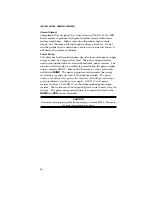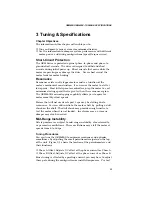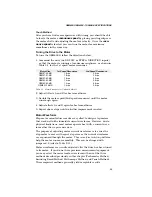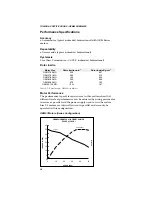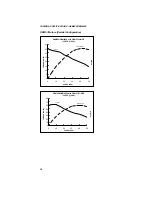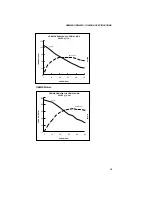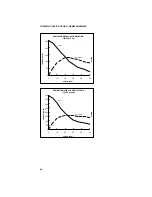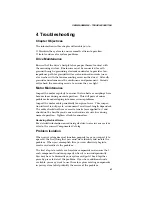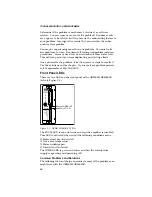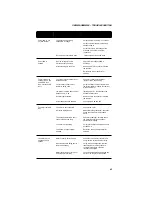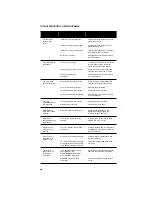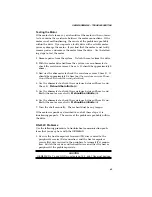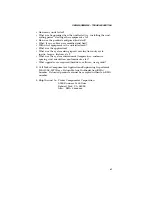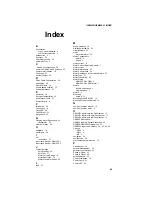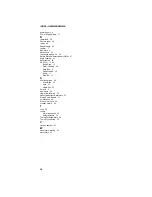
TROUBLESHOOTING • OEM650/OEM650X
46
2. Confirm that the host and peripheral are configured for the same
baud rate, 8 data bits, 1 stop bit, and no parity.
3. Use DC common or signal ground as a reference, not earth
ground.
4. Cable lengths should not exceed 50 ft. unless you are using some
form of line driver, optical coupler, or shield. As with any control
signal, be sure to shield the cable-to-earth ground at one end only.
5. To test the terminal or terminal emulation software and the RS-
232C cable for proper three-wire communication, unhook the
OEM650X and enter a character. You should not receive an
echoed character. If you do, you are in half duplex mode. Con-
nect the host’s transmit and receive lines together and send
another character. You should receive the echoed character. If
not, consult the manufacturer of the host’s serial interface for
proper pin outs.
Software Debugging Tips
This section offers helpful tips for debugging programs and under-
standing errors and fault conditions. The OEM650/OEM650X has
several tools that you can use to debug a problem in the system.
The software tools are listed below:
RA—
Limit Switch Status Report
R—
Report Status
IS—
Input Status Report
BS—
Buffer Status Report
B—
Buffer Status Report
Returning the System
If your OEM650/OEM650X system is faulty, you must return the
drive and motor for replacement or repair. A failed drive can damage
motors. If you must return your OEM650/OEM650X to effect
repairs or upgrades, use the following steps:
1. Get the serial number and the model number of the defective
unit(s), and a purchase order number to cover repair costs in the
event the unit is determined by Parker Compumotor to be out of
warranty.
2. Before you ship the drive to Parker Compumotor, have someone
from your organization with a technical understanding of the
OEM650/OEM650X and its application include answers to the
following questions:
• What is the extent of the failure/reason for return?
• How long did it operate?
• How many units are still working?

